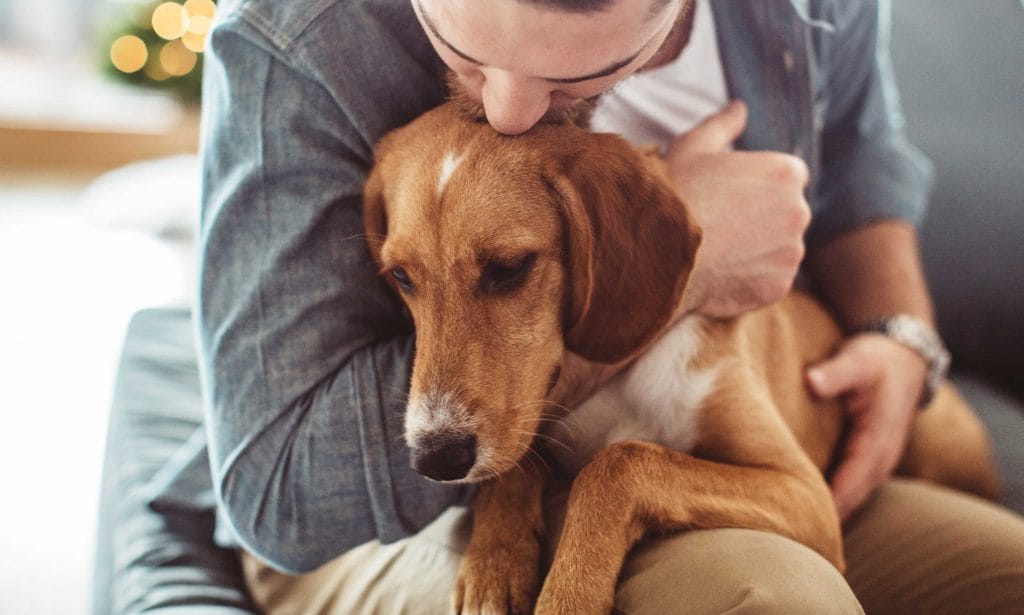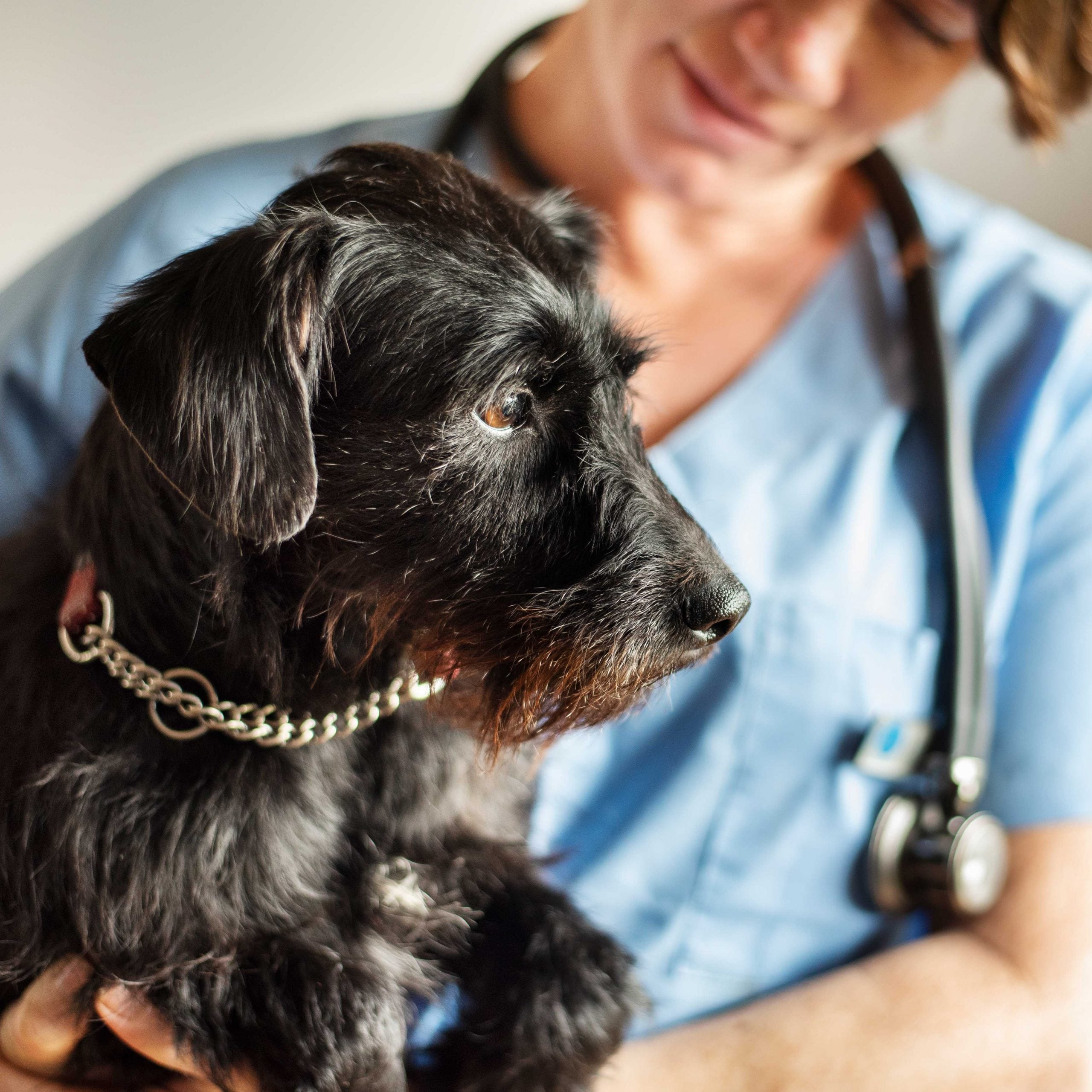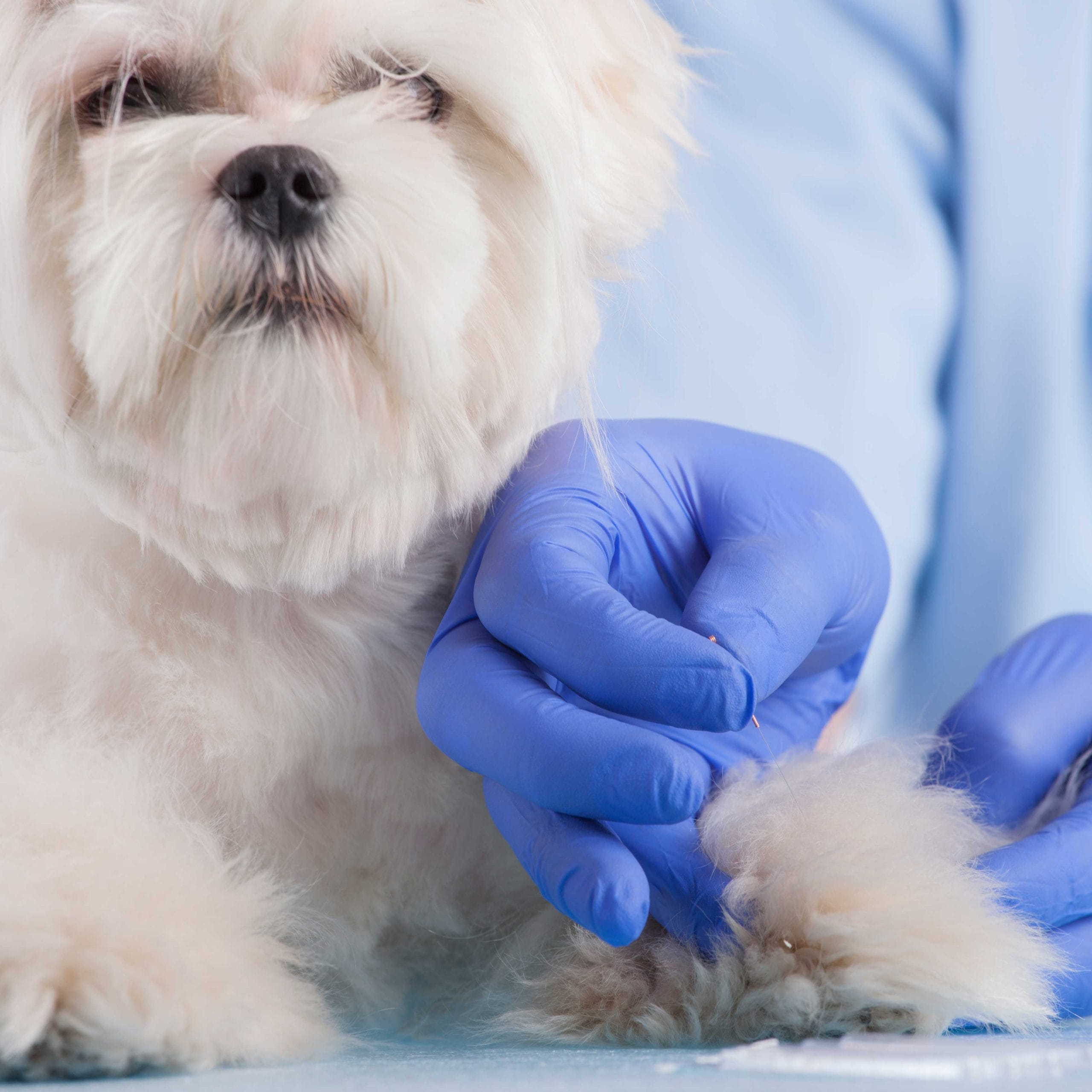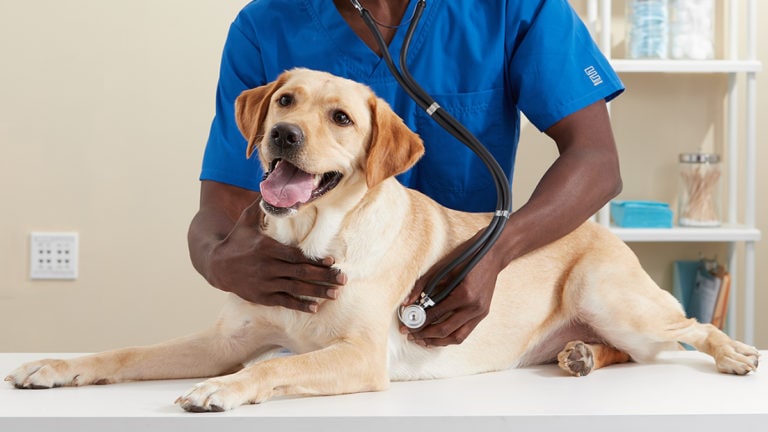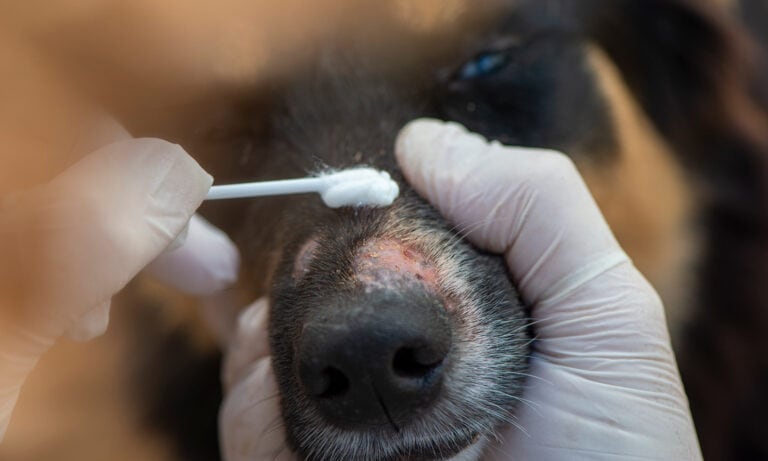As with our human loved ones, the possibility of cancer in dogs is also a reality. Receiving a cancer diagnosis on behalf of your furry friend is heartbreaking. Given the different types of cancer dogs can develop, different prognoses and treatment options, there are a number of steps you can take.
By knowing your pet, adjusting to the changes in their health and advocating for their needs, every dog lover can learn how to comfort a dog with cancer. Here’s how.
Talk to Your Veterinarians and Specialists
Under ideal circumstances, there should be good communication between a referring veterinarian and a specialist, says Mackenzie Pellin, DVM, DACVIM (Oncology), DACVR (Radiation oncology) and professor at the School of Veterinary Medicine at the University of Wisconsin, Madison.
Pet parents should take it upon themselves to make sure that information doesn't fall through the cracks. Records are generally shared between the vets on your dog’s healthcare team; but to avoid any back and forth, simply ask your vet to call your dog’s veterinary oncologist.
Do Research and Understand Your Dog’s Treatment Options
"In general, we have many of the same treatment options that human cancer patients have, but we use them in different ways," Dr. Pellin explains.
Possible treatments include:
- Surgery
- Chemotherapy
- Radiation therapy
- Immunotherapy
Your lifestyle, wishes and other aspects of your pet's health, along with the type of cancer/tumor your dog has, are all considerations when it comes to choosing a treatment.
"Quality of life, rather than quantity of life, tends to be a big focus of veterinary oncology," Dr. Pellin adds.
Know How to Tell When Your Dog Is in Pain

You certainly don’t want them to suffer unnecessarily. However, assessing your dog’s level of pain is tricky because dogs have a tendency to hide discomfort.
“We’re looking at a slowdown of everything,” says Alice Villalobos, DVM, DPNAP, is the founder and medical director of Pawspice and Animal Oncology, a consultation service in Hermosa Beach and Woodland Hills, California.
The following signs, per Dr. Pellin and Dr. Villalobos, may indicate your dog is in pain:
- Difficulty breathing
- Lack of an appetite
- Disinterest in the people, toys and activities they’ve always enjoyed
- Any abnormal behavior such as limping, pacing, excessive panting, or refusing to lie down
“Anything that doesn’t seem quite like the normal dog is potentially a sign of pain,” Dr. Pelling notes. “Pain can be so subtle in dogs.”
Know How to Help Alleviate Pain
Safely Play with Your Sick Dog
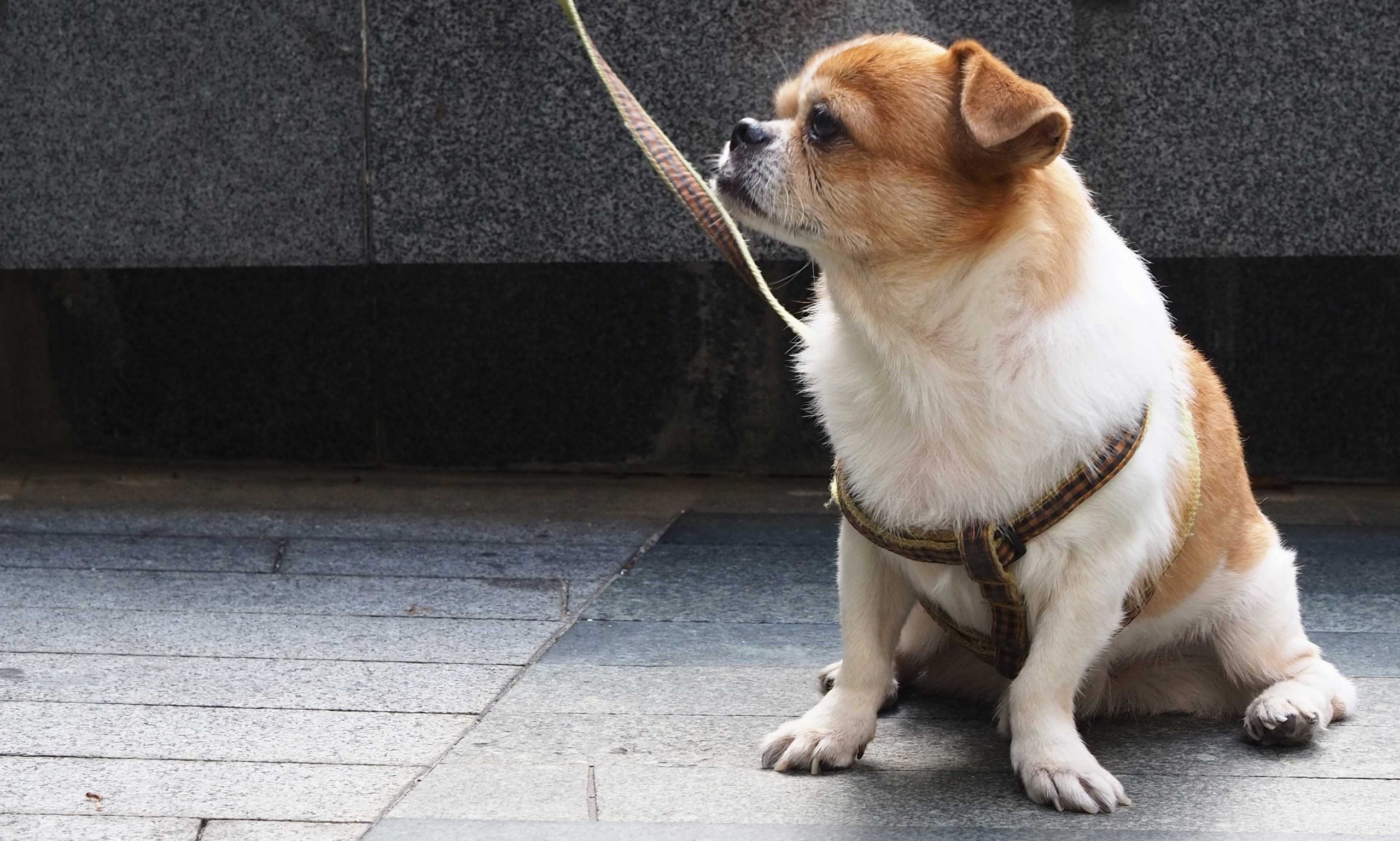
Every dog and diagnosis is different, but sick dogs generally need a lot of rest and low-stress activities, Dr. Pellin says. For example, if your dog has bone cancer, which increases the risk of fractures, it’s better to go for an easy walk rather than jogging or playing rough.
“With some cancers, you can still do a lot with your dog, but you want to avoid intense activities if there is a risk of internal bleeding or breaking bones,” Dr. Pellin says.
Other gentle playtime activities include a subdued game of tug-of-war or fetch in a more confined area. Stop the activity if they are tugging excessively or getting too excited.
“Because cancer mostly affects middle-aged and older dogs, sometimes just a nice snuggle on the couch can be a good way to spend time together,” she notes.
Provide Tools to Improve Your Pet’s Quality of Life

Pet Ramps
Ramps can help dogs avoid staircases, enter and exit cars, and get on and off beds.
Dog Diapers
Diapers can cut down on messes and improve the quality of life for your family. Make sure to change your dog’s diapers frequently to prevent irritation and urine scalding.
Belly bands for male dogs, like Paw Inspired Belly Band Male Washable Wrap Dog Diaper, are also helpful for accidents or marking, Dr. Pellin says.
Harnesses
If your dog is having trouble moving their hind legs, a lift harness (like Frisco Rear Lift Handicapped Support Dog Harness) or sling can help them feel more secure while they’re going up and down stairs. These harnesses go around the rear of the dog and allow you to assist your pet during walks or navigating stairs.
For dogs with tumors in the neck or brain, it’s better to use a harness rather than a neck collar because it lessens pressure on the affected area. Harnesses should be snug but not too tight; you should easily get two fingers between the harness and skin.
Dog Wheelchairs
Wheelchairs are an option for dogs who have trouble moving, but still want to go for walks. Dr. Pellin recommends fitting a wheelchair under the guidance of a physical therapist, rehab veterinarian, or similarly experienced medical personnel to make sure there isn't potential for rubbing or injury.
Other Solutions
Not all fixes require buying specialized equipment. For dogs who may need better traction, put down rugs on slippery surfaces and/or slip booties onto their feet.
“Even just using a towel under the belly to provide assistance on slippery floors or stairs can be helpful,” Dr. Pellin says.
Additional Pet Care Considerations
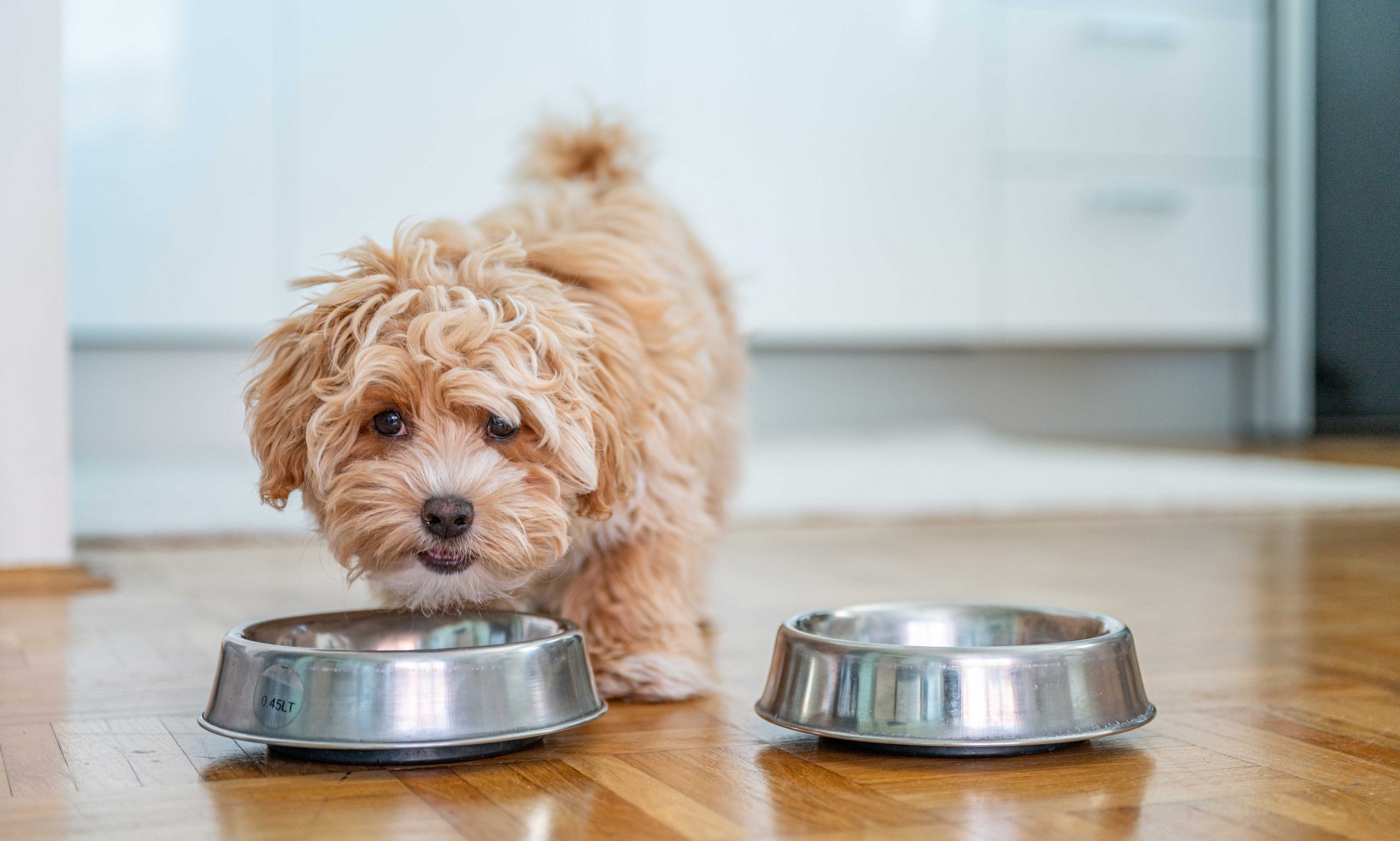
Supplements
As research uncovers the importance of the presence of good bacteria in the intestinal tract, Dr. Pellin notes that “a high quality probiotic can't hurt and may help.”
Diet
You should be able to continue feeding your dog their normal high quality food, but if they’re actively receiving cancer treatment, Dr. Pellin recommends avoiding a raw diet and making sure to fully cook any fresh meats you feed your dog.
As with humans, undercooked or uncooked meat increases your dog’s risk of infection from food borne illnesses. When a dog is eating a raw diet, bacteria cannot be killed due to the lack of cooking the food. Because cancer treatments lower the immune system notably, that risk becomes too great.
Your vet may have additional recommendations.
Immune System
"If a patient is on chemotherapy, we may recommend avoiding dog parks, groomers, etc., during certain times of their treatment protocol, but in general they can do their normal activities," Dr. Pellin explains.
"Pawspice" Care: What It Is and When to Consider It
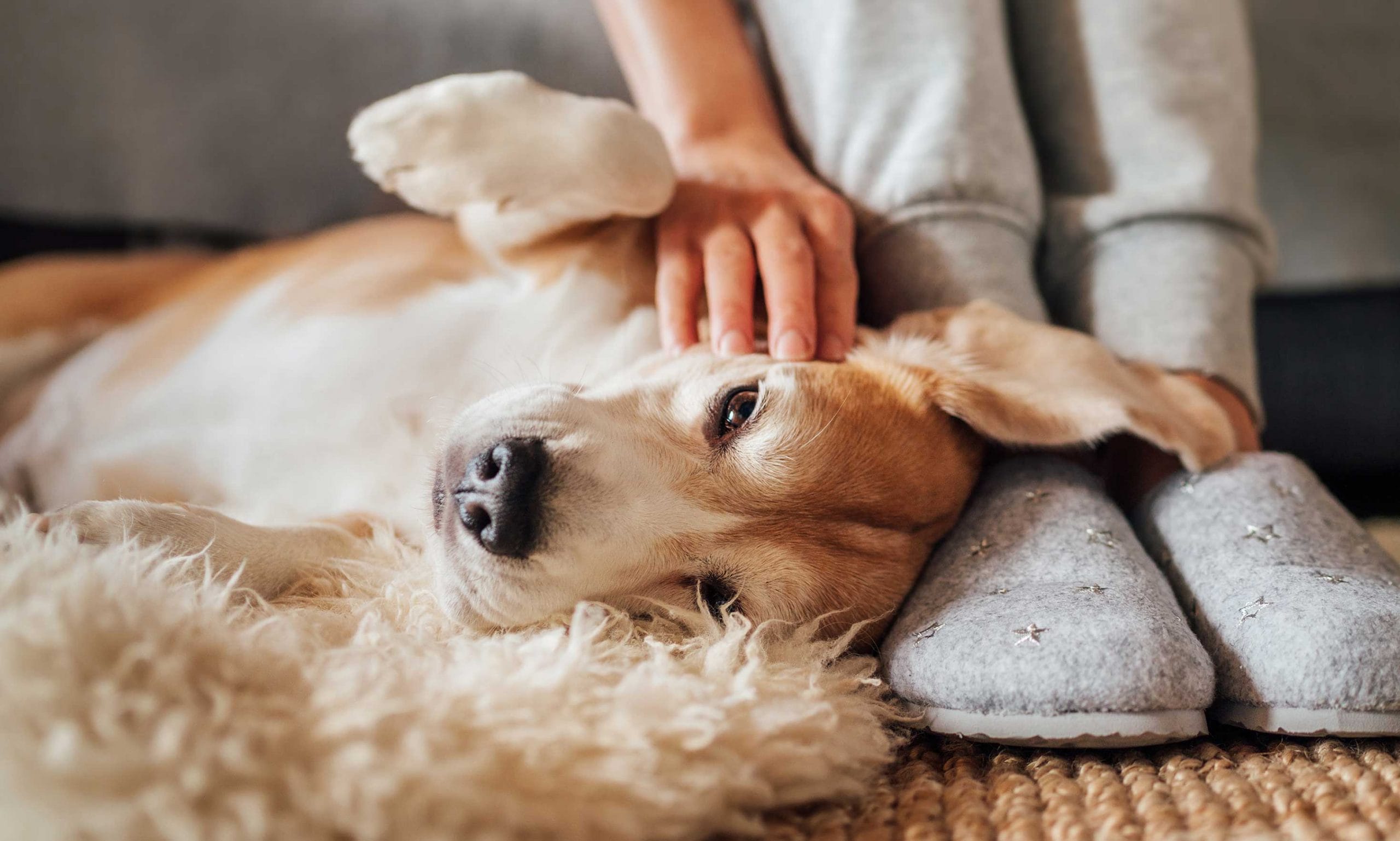
For example, there are many tumors that can be cured with surgery, especially if discovered when they are small, Dr. Pellin says. These include low-grade sarcomas, low-grade mast cell tumors, thyroid tumors and small tumors of the anal gland.
“Some tumors can have a prognosis of around a year with more aggressive treatment, such as lymphoma and osteosarcoma,” she says, “while others have a very poor prognosis, even with treatment.”
Starting with this knowledge can help you begin to consider the more difficult decision about end-of-life care–or “pawspice”–and ultimately, euthanasia.
For “pawspice,” Dr. Villalobos emphasizes “comfort care,” or making sure pets living with cancer aren’t suffering unnecessarily. This may involve:
- Stopping cancer treatments such as chemotherapy
- Increasing pain medication
- Increasing supplemental oxygen for dogs who aren’t breathing well
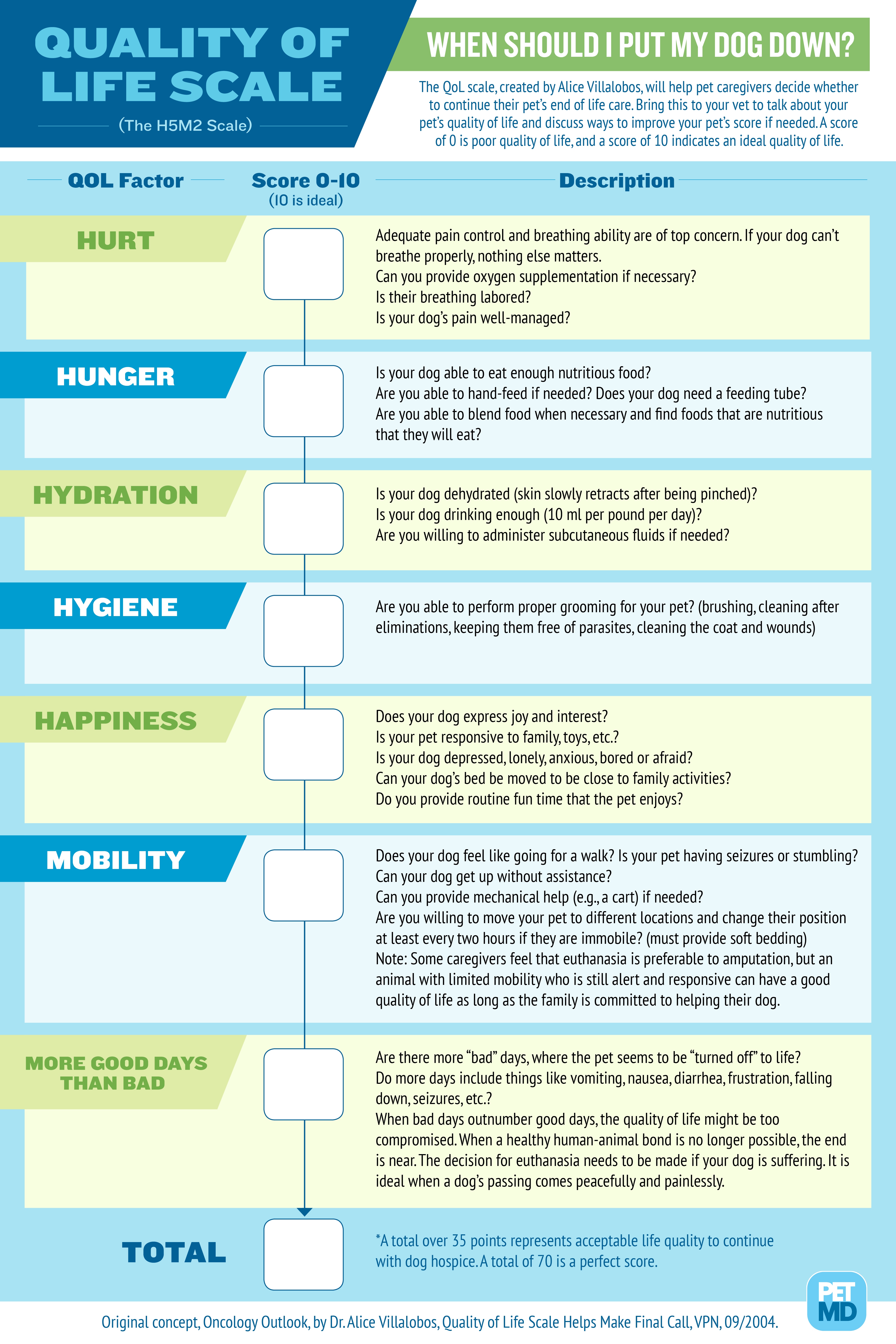
So, when is the right time? Unfortunately, the answer isn’t black and white. Pet parents need to look at their dog’s quality of life (pet parents can use the Quality of Life Scale to help determine this), pain levels and amount of suffering they’re experiencing.
“Pawspice often isn’t a point. [Rather,] it’s a transition toward the very end of life when the decline is really obvious,” she says. When your pet is experiencing “relentless and unnecessary suffering,” pawspice is definitely in their best interest.
Though it’s difficult to contemplate, planning the end of your pet’s life is a necessary part of caring for a dog with terminal cancer, Dr. Pellin says. She urges pet parents to picture what they want it to look like. Would you prefer for euthanasia to occur in a clinic or at home? Do you want other dogs or family members present?
Thinking about these questions early on will help you make objective decisions during emotionally turbulent times. And as difficult as it can be, remember to think about your dog’s happiness, not your own.
More about cancer in dogs:
Share:
